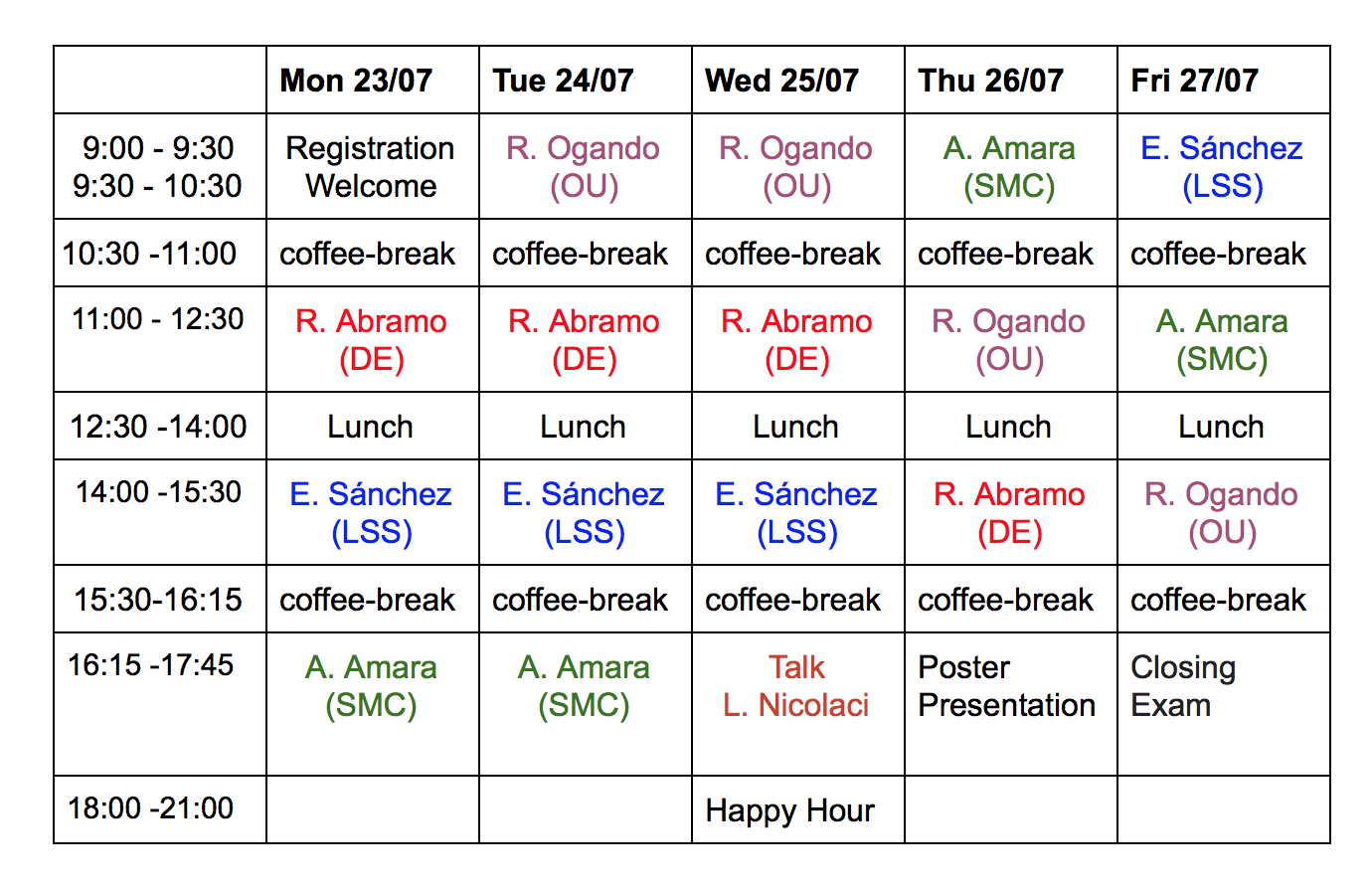Na edição de 2018 da Escola de Inverno do IFGW tivemos o curso sobre Cosmologia Observacional aberto para estudantes de pós-graduação e último ano da graduação, tanto da UNICAMP quanto de qualquer outra instituição de ensino.
Programa
A escola de Cosmologia Observacional oferece 4 cursos: Estrutura em Larga Escala do Universo; Energia Escura; Métodos Estatísticos em Cosmologia e Observando o Universo. Cada curso contará com 4 aulas de duração de 1:30 hrs distribuídas ao longo da semana. Além disso, está programada uma palestra sobre o status atual da cosmologia observacional. Os cursos serão dados em inglês. Abaixo segue o resumo, em inglês, a ser abordado em cada tema.
Curso 1: Dark Energy (DE) Responsável: Prof. Dr. Raul Abramo (IF, USP)
In 1998 two different groups discovered, using data from type Ia Supernovae, that the universe has been, for the past few billions of yours, in a state of accelerated expansion. According to the standard theory, this acceleration is inconsistent with a universe dominated by “normal” matter, whose gravitational interaction is attractive, and tends to decelerate the expansion. Current models for this accelerating expansion include new forms of matter/energy, called dark energy, and modifications of Einstein’s theory of General Relativity. In this mini-course we will discuss how the cosmic expansion comes about in these models; what are the present observational constraints, from the early and from the late universe; and what further observations are being planned to test these theories to higher precision and accuracy, in the near as well as in the distant future.
Curso 2: Large Scale Structure (LSS) Responsável: Prof. Dr. Eusebio Sánchez (CIEMAT, Madrid)
The current standard cosmological model implies that the universe originated 13.7 billion years ago, in an extremely energetic event, the Big Bang. The basis of this model are the General Relativity, the theory that explains gravity, and the cosmological principle, that states the homogeneity and isotropy of the universe on its largest scales. Over the course of the past several decades, a large corpus of observational evidence has driven to the current physical implementation of this idea of the origin and evolution of the universe, the Lambda Cold Dark Matter theory. The most shocking consequence of this theory is that everything that has ever been directly observed makes up just 5% of the universe content. The remaining 95% is formed by two different components: dark matter (25%) and dark energy (70%). The existence of the dark components is inferred from the effect they have on ordinary matter, but they have never been observed in the laboratory.
One of the most important probes of cosmology is the large-scale structure of the universe. Galaxies are not uniformly distributed in space, but clustered due to the action of gravitation. On large scales, the universe shows a very rich structure, with a hierarchical order, from groups and clusters to superclusters and voids. In this course, we will review the current understanding of how this structure formed and evolved since the beginning of the universe to what is observed today, and how it contributes to the current cosmological knowledge.
Curso 3: Statistical Methods on Cosmology (SMC) Responsável: Prof. Dr. Adam Amara (ETH, Zurich)
Statistical methods are increasingly important in modern science. In this course we will build an understanding of statistical methods starting with the basics of probability theory and building towards methods beyond Bayesian inference. These include information content of experiments through relative entropy and ABC methods for difficult problem when the likelihood cannot be calculated. We will also cover topics which are now commonly used in cosmology.
Curso 4: Observing the Universe (OU) Responsável: Prof. Dr. Ricardo Ogando (LIneA, ON)
The only way to get to know the universe is to observe it. Astronomy is one of the oldest ways of doing it. Since Hipparchus of Nicaea ( ~150 B.C), who created the first star catalog, our understanding of the universe has evolved a lot, specially in the last century. We start with an overview of observational astronomy, going over different modern techniques and wavelength windows: from radio to gamma-rays. Then, we focus on large photometric surveys, since taking pictures of the universe is the closest method to us. Covering vast swaths of sky, we enable the discovery of rare objects and apprehend the laws that govern the universe. Following up discoveries from photometry, spectroscopic observations can give us more details about the chemical composition and dynamics of objects, like stars, galaxies, and clusters of galaxies. Finally, we go over the techniques to access and explore such datasets, a new area called e-astronomy, taking advantages of large and public repositories of astronomical data, where anyone with the right tools can explore the universe.
Palestra: Status of Observational Cosmology Prof. Dr. Luiz Nicolaci da Costa (LIneA, ON)
The purpose of this talk is to give a brief retrospective on the enormous advance of cosmology over the last 40 years. From a modest beginning, observational Cosmology has become a prime example of Big Science with several ambitious projects generating enormous volumes of data under way or being planned. Interest in this area comes from the discovery of the mysterious dark energy, whose existence, whatever its nature, has important implications to physics. Emphasis will be given to the sociological changes generated by these multinational projects, which has required important changes in the way science is done.
Programação:
Informação completa da Escola de Cosmologia Observacional AQUI.
 Happy Hours: Bar Lado B
Happy Hours: Bar Lado B
Avenida Albino José Barbosa de Oliveira, 1240, Campinas-SP
